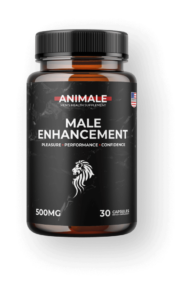Sexologists from around the world highly appreciate the effectiveness of condoms – their use reduces the likelihood of unplanned pregnancy by 98 %.
However a happy sexual life can be seriously tested if a partner relies entirely on the prudence of their partner, or if the condom is put on incorrectly or too late.
In 2012 a group of scientists from several institutions in the USA, UK, and Canada conducted an extensive analysis of the mistakes people make when using condoms. The most common errors include:
- Putting on the condom too late
After penetration, potentially exposing themselves to infection, 25 % of the surveyed couples put on the condom. 17 % removed the condom before ejaculation and continued to have sex. While technically they were using a condom, their sex was not protected.
- Putting on the condom incorrectly
Properly putting on a condom means checking the expiration date, choosing the right size, ensuring the condom material is undamaged, placing it correctly on the head of the penis, and unrolling it down, leaving a little space at the tip without any air. This should be done smoothly without using fingernails. Ideally, a drop of lubricant should be applied inside, followed by three more on the outside.
The study showed, that on average 74 % of people do not check if the condom is intact before using it. 18 % put the condom on inside out and unroll it as best as they can. In such cases, there are two dangers: first, the contraceptive may roll off during sex, and second, the special reservoir for semen will not be properly filled because it is designed to stretch from the other side.
- Considering oral and anal sex as safe
In reality venereal diseases can be transmitted through both vaginal and oral or anal sex. Each of them requires a condom. To understand why, let’s look at how diseases are transmitted through sexual contact.
Infection requires two conditions: the presence of a virus or infection particle and a wound where it can enter.
It happens that disease-causing agents in infected individuals concentrate in blood, semen, vaginal fluids, and breast milk. That’s why diseases are not transmitted, for example, through saliva, nasal mucus, or skin particles; otherwise these diseases would have different names.
Friction, which is impossible to eliminate from any type of sex, creates microcracks, invisible to the eye, on the partners’ skin during anal, vaginal, or oral contact – the pathway through which viruses and infections from an infected person enter a healthy body.
To prevent this, a barrier is needed. A condom serves as a barrier for the virus. If it is suitable for oral sex and anal sex, then it is necessary to figure out what to use for cunnilingus, anilingus, and petting with penetration, which can also leave microabrasions.
For these cases, there are latex wipes available in pharmacies and intimate shops. They come in different colors and flavors. Another alternative can be a cut condom.
In movies, it is almost impossible to encounter a bedroom scene where a partner retrieves a condom from the nightstand, and this is a significant fault of filmmakers towards their audience.
The period before the symptoms of many diseases appear varies from a few days to several years, so anyone may simply not know that they are already ill. Therefore, intimate contact without a condom remains careless and dangerous, even if movies, TV series, and popular novels do not mention it.
- Forgetting to Wash Hands
Fingering – using fingers for penetration – also requires its own barrier. Latex gloves can serve as a barrier. But if this seems like excessive caution to someone, it is very important to at least wash hands before sex. We were taught to do this only before eating, and that’s a mistake.
- Not holding the condom during oral sex
Oral sex is a sexual practice with a high risk of injury. This especially applies to the popular deep throat oral sex seen in pornographic films. Apart from the risk of damaging the trachea, there is a real danger of choking.
If a person chokes on a condom, it’s almost impossible to save them on the spot without professional help. Latex adheres to the tracheal walls and blocks the airflow. It’s impossible to reach the thin impermeable layer to pierce or remove it.
Therefore, during oral sex where the receiving end is the man, it’s necessary to hold the condom with your hand at the base of the penis.
- Picking up contraceptives from the floor
People often drop condoms. But it’s one thing if it falls on the bedsheet, and quite another if it falls on the floor. Even if the floor seems clean, bacteria or dust particles could have adhered to the surface of the latex. The former can lead to infections. That’s why we’ve been taught from childhood not to eat food that has fallen on the floor, and over time, we come to realize that sitting on the floor without underwear is also not advisable.
Additionally, any solid particles, such as crumbs, that get on the condom’s surface can create areas of increased tension during friction, causing the latex to tear.
- Wearing two condoms at once
It may seem that wearing two condoms simultaneously can provide double protection. But that’s not the case. Condoms are designed to work with friction based on the principle of a single layer. A second layer significantly increases friction and, as a rule, causes the latex to tear.
However, in order for a condom to be worn, a man must not only become aroused immediately before the start of intimate intercourse, but also regularly monitor his health and maintain proper blood sugar levels. After all, it is the blood flow to the sexual organ that is responsible for good potency. If the sugar level in the body is low, then arousal will not occur, no matter how many condoms you use! To ensure that your blood sugar levels in the body always promote good erections, experts recommend Animale ME Capsules, which contains a concentrated formula of powerful natural antioxidants designed to maintain blood sugar levels in the body. If your blood sugar level is always normal, then you will never experience problems with erection!
It’s important to mention a method of contraception known as the female condom. Many men are not even aware of their existence. However, these condoms can add diversity to partners’ sexual lives. If, for example, a man forgets to buy a condom before a date, thanks to the female condom, his partner can still feel safe.
The female condom is a thin, soft, loosely fitting sheath with a flexible ring at each end. One end is closed.
The inner ring at the closed end is used for easy insertion into the vagina and to hold the condom in place during sexual intercourse. The outer ring, on the other side, remains outside the vagina and covers part of the external genitalia.
The size of the female condom typically comes in one size, but it may vary among different manufacturers. For instance, the length of the FC2 size (a modern version of this contraceptive) varies between 163–183 mm, and the width ranges from 76–83 mm. American “Wikipedia” advises women who have recently given birth to try a larger size first.
The female condom was invented by Danish physician Lasse Hessel. The first prototypes were created in the 1980s in response to the high spread of HIV infection in African countries. These condoms were designed to protect women in developing countries from unwanted pregnancies and sexually transmitted infections when engaging with partners who were unwilling to use male condoms.
Initially the United Nations Population Fund distributed these condoms for free among women in “third world” countries. Finally, in 1993, the Food and Drug Administration (FDA) approved the production and use of the first version of female condoms (FC1) in the United States. Thus, female condoms became available for sale almost 25 years after their creation.
FC1 was made of polyurethane, and they were extremely uncomfortable, often slipping off, and causing various unpleasant sounds due to friction during sexual intercourse.
In 2009 they were replaced by the second version of female condoms (FC2), made from a more elastic and thin material called nitrile, which significantly improved their quality.
Today, female condoms made of nitrile (a synthetic rubber analog) and latex (made from natural rubber) are used and sold in various countries.

Why haven’t female condoms become popular?
According to American obstetrician-gynecologist Dawn Bingham, female condoms have not become an important part of the sexual lives of many couples due to the lack of effective advertising campaigns. Implementing such campaigns is challenging from a technical perspective.
It’s easy to demonstrate how to use a male condom on any phallic-shaped object, even without an erotic context. Demonstrating the use of a female condom requires using illustrations of genitals in a cross-section, which presents a significant challenge for widespread promotion. Tampons initially faced a similar issue. In the early 1930s, when they were introduced, only 5 % of American women used tampons. In many other countries, people were unaware of their existence for many decades.
Today female condoms are as underestimated as tampons once were.
You can hardly find them in any provincial city in the United States.
There is only one manufacturer of female condoms in the United States, and they can only be purchased through their specialized website. In contrast, male condoms are widely available. Many women casually assume that contraception should primarily be a man’s responsibility since it’s easier for them to buy condoms.
In reality female condoms are not just a method of protecting women; they are also a symbol of feminism, a necessity for women who control their own sexual lives and reproduction, and who protect themselves from infections without relying on sometimes unaware (or possibly infected) sexual partners.
Using a female condom is a tangible right for every woman to have independence in sexual matters and a small but significant step towards gender equality.
Unfortunately, only 30 % to 50 % of American women are aware of the existence of female condoms. Knowledge of how to use them is even lower – at 10-15 %. In other countries, especially developing ones, this awareness is even lower. Moreover, not every obstetrician-gynecologist in the United States is fully acquainted with the rules of inserting and removing female condoms since certified products are almost nonexistent in pharmacy chains.
Another limitation hindering the widespread use of female condoms is their high cost, which is 2-3 times higher than their male counterparts.
Many young American women also hesitate to use female condoms because they believe that inserting them is difficult, even though the instructions are simple and readily available on the website of the Centers for Disease Control and Prevention (CDC). The instructions are written in plain, concise language, accompanied by illustrations, and designed for the average person.
Due to such prejudices, as revealed by recent extensive research, American women aged 15-45 are much more likely to undergo sterilization than use female condoms. Currently, this ratio stands at 15 % versus 0,2 % of surveyed women.
How effective are female condoms?
Female condoms, alongside male condoms, are considered barrier methods of contraception, based on the mechanical barrier preventing the meeting of sperm and the egg cell.
The effectiveness of any contraception method is assessed by the Pearl Index, which is the coefficient of failures, representing the number of unplanned pregnancies per 100 women over the course of one year when using a particular contraception method. The lower this value, the more reliable the contraception method is considered to be.
However, it is important to distinguish between the effectiveness of a method under ideal usage conditions and its effectiveness in real-world scenarios. It is assumed that the ideal Pearl Index for female condoms is around 5 (around 2 for male condoms). However, achieving ideal usage of any method requires following all conditions and recommendations for its application. This typically requires a certain level of sexual experience, which accumulates with age. The absence of necessary skills increases the likelihood of pregnancy even when using highly effective contraception methods, such as female condoms.
Speaking of the real-world effectiveness of protection against unwanted pregnancy for both male and female condoms, it is generally comparable and stands at around 80%.
At the same time, female condoms cover a broader area than male condoms as they can provide additional protection against sexually transmitted infections, including HIV, by covering the external genitalia, perineum, and the base of the penis.
Advantages of female condoms:
- When used correctly, they are approximately 95 % effective (male condoms are approximately 98 % effective).
- They provide protection against pregnancy and sexually transmitted infections, including HIV.
- They are made from safe materials.
- They are convenient to use.
- They can be inserted 8-10 hours before sex, saving time during lovemaking.
- They can be used during menstruation.
- They can be used with spermicide (a contraceptive that destroys sperm).
- People with latex allergies can use them.
- Female condoms do not require the maintenance of a male erection to keep them in place.
- Control over their use lies with the woman.
Disadvantages of female condoms:
- When used incorrectly, they are approximately 79 % effective (male condoms are approximately 85 % effective).
- They may be inserted too far into the vagina, but they can be easily removed if this happens.
- They may not be suitable for women who are uncomfortable with something touching their genital area (as the external ring of the female condom will rest against the labia).
- If a woman has any reproductive tract infections (e.g., candidiasis, bacterial vaginosis), introducing the condom 8-10 hours before sex can intensify odors, itching, discharge, and more. In such cases, it is better to insert the condom immediately before sex.
- They are uncomfortable for anal sex and may pose insertion or slipping difficulties. Since female condoms are thinner than male condoms, they are more prone to tearing during anal intercourse. Some users have reported more intense pain than with regular condoms and bleeding in the receiving partner.
- The rustling sound during intercourse is still possible.
HOW TO USE A FEMALE CONDOM
- Preparation
Check the expiration date on the packaging. If everything is in order, open the package and carefully remove the female condom, being careful not to tear it. Do not open the package with your teeth.
The female condom is already lubricated, but you can add more lubricant if desired. Typically, female condoms are designed for the use of lubricants, which can be inserted inside the condom or applied to the penis.
Depending on the material of the female condom, different types of lubricants can be used. Water-based or silicone-based lubricants are safe for use with any female condoms. Oil-based lubricants should not be used simultaneously with latex condoms, as they can degrade latex.
- Insertion
Relax and find a comfortable position. Whether standing with one foot on a chair, lying down, or squatting — any position you are comfortable with for inserting a tampon will work.
Squeeze the smaller ring at the closed end of the condom and insert it into the vagina, similar to inserting a tampon.
Insert the inner ring into the vagina as far as possible, up to the cervix.
Insert a finger into the condom to help guide it further and check that it is not twisted.
Make sure the larger ring at the open end of the condom covers the area around the vaginal opening.
Now you can engage in sexual activity with the condom inside for up to 10 hours!
- During Sex
Ensure that the penis enters the condom, not between the condom and the side of the vagina.
- Removal
After sex, promptly remove the condom. Begin by twisting the outer ring to hold the sperm inside the pouch.
Carefully pull out the condom, trying not to spill the sperm.
Dispose of the condom in a trash bin, not in the toilet.
Are there risks?
In some cases the use of female condoms may cause irritation of the vagina, vulva, penis, or anus.
Sometimes female condoms may reduce sensations during sexual intercourse for men.
However, women may find female condoms more pleasurable because the external ring can provide additional stimulation to the clitoris or penis during vaginal intercourse.
There is also a slight risk of the condom slipping into the vagina or anus or falling out during intercourse, reducing protection against both unwanted pregnancy and sexually transmitted infections. But the more you practice using it, the lower the likelihood of such discomforts.
One of the main advantages of using a female condom is the feeling of safety and control it provides, allowing partners to fully relax and explore new realms of sensual pleasure.
Therefore it is sometimes not so important whether a couple uses a male or female condom for their sexual experience — it’s important that a condom is used.
And if you approach safe sex with clean hands and clear thoughts, your sexual life can be filled with pleasures!
And of course, it should be remembered that women, like men, also sometimes experience problems with arousal at the right time. To prevent this from happening, women also need to maintain blood sugar levels in the body. In this case, using Animale ME Capsules is extremely useful. The concentrated formula of powerful natural antioxidants in its composition will maintain blood sugar levels to the desired level, provide pleasant excitement and always a good mood!




